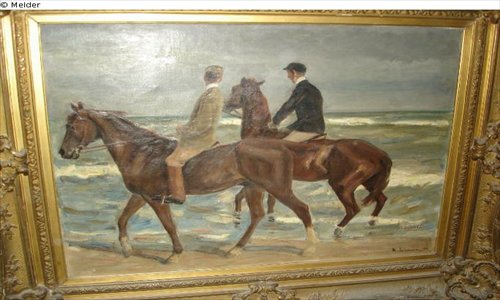Since the release of the film The Monuments Men, many have become aware of the art meant for destruction during WWII. While there is a great deal of it that was never destroyed yet has not yet been recovered, the biggest collection to date was found a couple of years ago. Comprised of almost 1500 pieces, the recently discovered WWII art collection has sparked some controversy due to the reminder the collection presents regarding some of the unnecessary evils of war.
The paintings were found in the apartment of Munich resident Cornelius Gurlitt, and are comprised from numerous other collections. He was fairly secretive about the cache until the WWII art collection was found by a tax inspector. Even Gurlitt’s own family did not know about the treasures in his possession, they were such a well-kept secret. Far from being a simple collection of various paintings, the collection includes several work by masters of the artistic community still popular today. They include Chagall, Matisse, Picasso, and many others.
The secret would have been kept even longer if not for a return trip of Gurlitt’s after visiting Switzerland. When he was on his way back to Germany, he was stopped at customs and had an unusual amount of cash on him. When they tried to investigate him, it turned out he had not paid taxes in his life. The WWII art cache was discovered as a result of the government looking into the situation, which they naturally considered somewhat odd. Things looked even stranger when they discovered what looked like signs of a smuggler, an apartment filled to the brim with priceless antiquities.
The story behind the collection is actually one of historical interest. The man’s father, Hildebrand Gurlitt, had been an art dealer for Adolf Hitler. He was charged with selling the paintings overseas, though he was also involved in an exhibit Hitler put up to show how filthy he considered the works to be. Long after WWII, the collection was given to Cornelius, who occasionally sold a piece when he needed extra cash. Due to the manner in which his father came about owning the pieces, there is some legal question as to whether or not they should belong to the families of some of the war’s victims, artists and dealers who did not survive to claim their own works, the CBS News reports.
The debate concerning the WWII art collection may be difficult to figure out, as many of the original owners are not around anymore to speak for themselves on the matter. Still, this raises important questions regarding ownership of goods acquired through the Nazi regime and passed on to those not part of the regime themselves. No matter what the verdict, the discovery of the WWII art cache is certain to spark more and more research into how such paintings were dealt with during the war.
